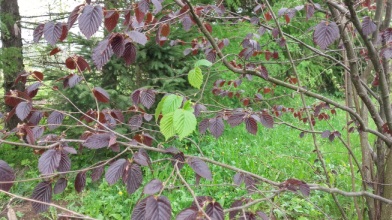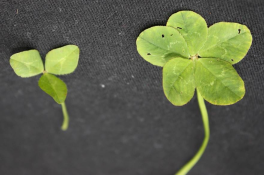Dr Jerzy Paszkowski was a Research Group Leader at SLCU between 2013-2018. This page summarises the research areas that his former group focused on.
Dr Jerzy Paszkowski
Former Research Group Leader at SLCU
Research Interests
Large proportions of eukaryotic genomes consist of transposable elements (TEs), predominantly retrotransposons. These are generally considered to be intra-chromosomal parasites. However, their periodical bursts of activity have influenced the organisation of host genomes and contributed to beneficial traits. Remarkably, a number of what turned out to be transposon-generated phenotypic innovations were selected by humans during plant domestication and breeding. Therefore, TEs can be considered as an attractive endogenous source of genetic variation. Unfortunately, there is at present no experimental/technological means to exploit this potential in a controlled fashion.
The Paszkowski Group's research focused on the epigenetic regulation of transcription and on molecular mechanisms contributing to formation of transgenerationally stable epigenetic sates (epialleles). This includes environmental and developmental inputs that have direct consequences for the heritable alteration transcriptional states and contribution of retrotransposons to the genome-wide landscape of epigenetic regulation.
The Group revealed surprisingly selective epigenetic, environmental and developmental mechanisms controlling retrotransposition in Arabidopsis.
Recent publications:
Catoni M, Griffiths J, Becker C, Zabet NR, Bayon C, Dapp M, Lieberman-Lazarovich M, Weigel D, Paszkowski J. (2017) DNA sequence properties that predict susceptibility to epiallelic switching. EMBO Journal. pii: e201695602. doi: 10.15252/embj.201695602.
Zabet NR, Catoni M, Prischi F, Paszkowski J. (2017) Cytosine methylation at CpCpG sites triggers accumulation of non-CpG methylation in gene bodies. Nucleic Acids Res. 2017 Jan 3. pii: gkw1330. doi: 10.1093/nar/gkw1330
Drost HG, Paszkowski J. (2017) Biomartr: genomic data retrieval with R. Bioinformatics.Apr 15;33(8):1216-1217. doi: 10.1093/bioinformatics/btw821.
Gaubert H, Sanchez DH, Drost HG, Paszkowski J. (2017) Developmental Restriction of Retrotransposition Activated in Arabidopsis by Environmental Stress. Genetics.Oct;207(2):813-821. doi: 10.1534/genetics.117.300103. Epub 2017 Aug 3
Cho J, Paszkowski J. (2017) Regulation of rice root development by a retrotransposon acting as a microRNA sponge. Elife. Aug 26;6. pii: e30038. doi: 10.7554/eLife.30038.
Sanchez DH, Gaubert H, Drost HG, Zabet NR, Paszkowski J. (2017) High-frequency recombination between members of an LTR retrotransposon family during transposition bursts. Nat Commun. Nov 3;8(1):1283. doi: 10.1038/s41467-017-01374-x.
Griffiths J, Catoni M, Iwasaki M, Paszkowski J. (2017) Sequence-independent identification of active LTR retrotransposons in Arabidopsis. Mol Plant. Oct 26. pii: S1674-2052(17)30311-8. doi: 10.1016/j.molp.2017.10.012.
Selected reviews:
Paszkowski J. (2015) Controlled activation of retrotransposition for plant breeding. Curr Opin Biotechnol. 2015 Jan 20;32C:200-206. doi: 10.1016/j.copbio.2015.01.003. [Epub ahead of print]
Iwasaki M., Paszkowski J. (2014) Epigenetic memory in plants. EMBO J. 2014 Sep 17;33(18):1987-1998. Epub 2014 Aug 7.


